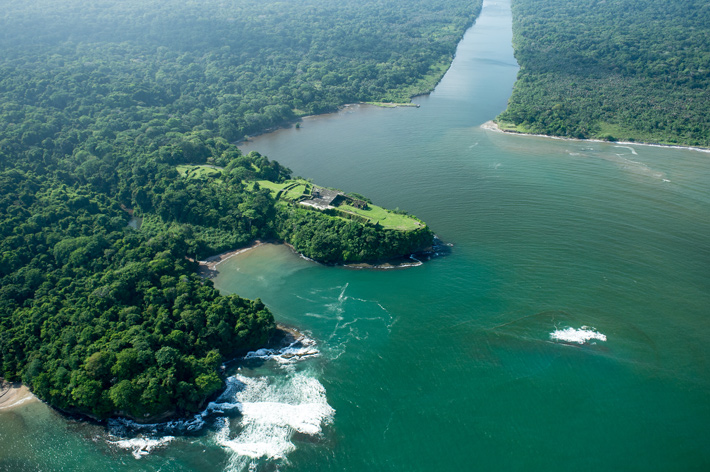Searching for the remains of Captain Henry Morgan's raid on Panama City

Like an illuminated skyline at sea, two dozen cargo ships wait along Panama's Caribbean coast. One after another, they enter Limon Bay and then the Gatun locks, three hydraulic chambers that lift the ships 85 feet above sea level. They exit into Gatun Lake and then the Chagres River. After 28 miles, through a cleaved mountain ridge and under the Pan-American Highway, the ships enter more locks—the Pedro Miguel lock and the two Miraflores locks—that ease the ships back down to sea level in Balboa Harbor, just southwest of Panama City. A trip through the Panama Canal from Atlantic to Pacific takes around nine hours and costs tens of thousands of dollars in tolls.
Long before the completion of the canal in 1914, this narrowest stretch of the isthmus separating the oceans was already used to avoid an 8,000-mile detour around Cape Horn. Ships unloaded cargo at the mouth of the Chagres River, seven miles from the modern canal entrance. Flat-bottomed river barges then moved people and cargo upriver to within 13 miles of Panama City, where donkeys took over on the Camino de Cruces trail. "For four centuries the Chagres has been the bond of union between the two great oceans of the world, the way between the East and West," wrote C.L.G. Anderson, an early-twentieth-century historian. Until the river became part of the canal it inspired—dammed to form Gatun Lake—it was the original, natural "Panama Canal."
Beginning in the sixteenth century, the Spanish used this route to supply Panama City and move gold and silver from the city to galleons in the Caribbean. In 1671, famed English privateer Captain Henry Morgan took the largest pirate fleet in history up the river to sack the city and rattle Spain's control of the Americas. And centuries later, during the California Gold Rush, it was easier for prospectors to take a steamer to Panama, sail up the river, then make their way north in the Pacific than it was to travel overland between America's coasts. For all the precious metals that have traveled up and down it, the Chagres has been called "the world's most valuable river."
Since the first trans-isthmus railroad opened in 1855, the mouth of the Chagres River has been a backwater surrounded by a clotted jungle full of anteaters, toucans, and bellowing howler monkeys. On a promontory above, shaped like the prow of a massive ship, sit the ruins of El Castillo de San Lorenzo el Real de Chagre, or Fort San Lorenzo, which defended the important trade route between 1626 and 1741. It was sacked several times, including by Morgan's men on their way to Panama City in 1671. Fritz Hanselmann, an underwater archaeologist at Texas State University, is looking for evidence of the privateer's Panamanian raid—but not in the fort. He's focused on a string of whitecaps in the sea 200 yards from it, treacherous Lajas Reef, which sank five of Morgan's ships, including his flagship Satisfaction.

No hay comentarios:
Publicar un comentario